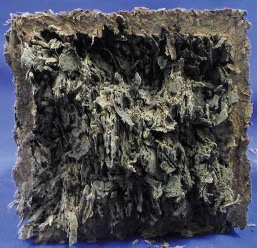Mechanical behavior of bio-aggregates based buildings materials
DOI:
https://doi.org/10.21809/rilemtechlett.2024.203Keywords:
Bio-aggregates, Mechanical behavior, Compressive strength, Interface Transition Zone (ITZ), Digital Image Correlation (DIC)Abstract
This Technical Letter examines the mechanical behaviour of bio-aggregate building materials (BBM), focusing on their performance under compressive, flexural and shear loading. The study synthesises the findings of various RILEM technical committees and recent research, highlighting the unique properties of BBM compared to conventional concrete. The paper discusses the factors influencing the mechanical behaviour of BBM, including bioaggregate type, volume fraction, morphology, mineral matrix, mix design, casting process and curing conditions. It presents detailed analyses of the BBM response under different loading conditions, highlighting the different phases observed during testing. The use of Digital Image Correlation (DIC) as an advanced measurement tool to capture BBM deformation is explored, providing insights into the heterogeneity and local behaviour of the material. The importance of the Interface Transition Zone (ITZ) between bio-aggregates and matrix is highlighted, with a focus on its formation and impact on mechanical properties. The paper also outlines the perspectives of a new technical committee aimed at harmonising test procedures and developing scientific data analysis methods for BBM. This comprehensive review provides valuable insights for researchers and practitioners working with bio-based building materials, paving the way for improved understanding and standardisation of the mechanical characterisation of BBM.

Downloads
Published
How to Cite
Issue
Section
License
Copyright (c) 2025 Sofiane Amziane, M'hamed Yassin Rajiv da Gloria

This work is licensed under a Creative Commons Attribution 4.0 International License.
Authors retain copyright of the articles published in RILEM Technical Letters and grant the journal the right of first publication with open access. The work is simultaneously licensed under Creative Commons Attribution 4.0 International License (CC BY 4.0) that allows others to share and adapt the work under the following terms: 1) a proper attribution is given in a form of bibliographic record with the DOI link directing to RILEM Technical Letters; 2) a link to the license is provided; 3) the changes (if any) are indicated.









